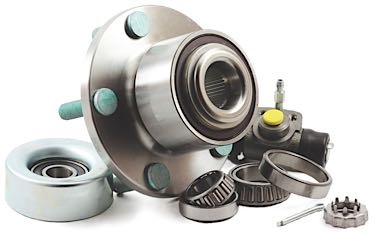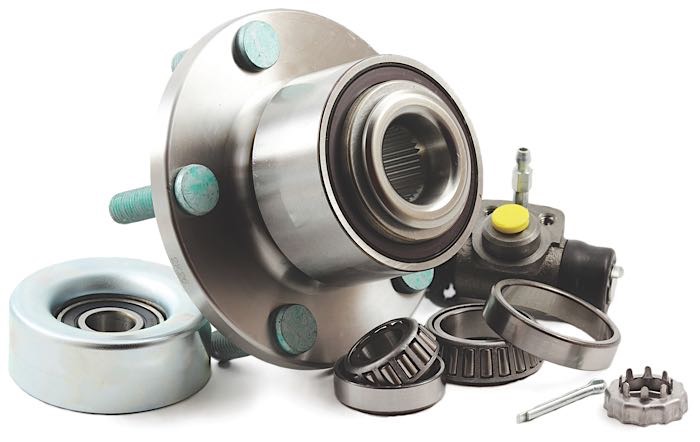 Removing a cartridge-style wheel bearing can be like pulling a tooth. Sometimes it comes out in one pull, but sometimes it requires emergency surgery. This can be a service opportunity for your shop, with a lot of import vehicles equipped with these bearings in the front and rear. While the fundamentals of the job have not changed since the 1980s, what has changed is the complexity of the knuckle and the bearing seals, as well as the materials from which the knuckles and axles are made.
Removing a cartridge-style wheel bearing can be like pulling a tooth. Sometimes it comes out in one pull, but sometimes it requires emergency surgery. This can be a service opportunity for your shop, with a lot of import vehicles equipped with these bearings in the front and rear. While the fundamentals of the job have not changed since the 1980s, what has changed is the complexity of the knuckle and the bearing seals, as well as the materials from which the knuckles and axles are made.
Zero Play
Noise is still the main indication of a bad bearing. Bearing noise will change as the vehicle is turned and the bearing is loaded. Some vehicles may make a chirping noise that changes as the brakes are applied. As a rule of thumb, there should be zero play in the bearing when you tug on the wheel at 12 and 6. But, even some bad bearings might have zero play. Instead, the primary symptom of a worn bearing will be an erratic wheel speed sensor signal or a wheel speed sensor code in the ABS module. This is the result of the same amount of play under load forcing the seal out of the groove in the outer race.
Pulling Teeth
Removing a cartridge-style wheel bearing is not an easy task. Pressing out the bearing requires significant disassembly and force to pull the outer race from the knuckle.
The main precaution you need to take is to not use an impact wrench to remove the axle nut because an impact wrench on some vehicles can damage the needle bearings on CV joints. While an impact wrench may not seem as powerful as the engine, if the suspension is at full droop, the angles of the joint could damage some of the delicate surfaces. Also, the rattling caused by an impact wrench is not good for some limited-slip differentials. Treat the wiring harness of the wheel speed sensor with care when you remove the wheel speed sensor. Even the slightest tug on a connector can cause issues and ABS codes.
Look at the other components like tie rods, ball joints and control arms. This is the time to recommend replacement if you see anything in need of repair.
Knuckle & Axle Inspection
Once the old bearing has been removed, take the time to clean and inspect the bearing bore and the surfaces of the axle that make contact with the bearing. Any debris or imperfections can prevent the bearing from seating properly and prevent the pre-load torque adjustment from being accurate.
Check the bore for roundness using a snap bore gauge. The gauge should rotate in the bore easily. Any distortion in the bore can cause a new bearing to fail prematurely. It can also make installing the new bearing to the proper depth impossible.
Installation
When you remove the new bearing from the box, you will notice the bearing is difficult to turn. This is normal. The grease in the new bearing is designed to be thicker to prevent the balls or rollers from rubbing on the races during transport and causing surface damage. As the bearing heats up after installation, the solids in the grease melt and change.
When pressing in the new bearing, make sure the adapter does not come in contact with the seal, and make sure the seal with the tone ring faces inward. When pressing the bearing into the bore, make sure it is not cocked or misaligned. After the bearing is in the bore, make sure the seal with the tone ring is free of debris.
Killed by a Curb
The reason most bearings fail is twofold. First, a significant impact can cause the balls to make a mark in the outer race. When a vehicle hits a curb, pothole or other object in its path, for example, the force is transferred to the small surface area of the bearing. The impact may cause damage to the races and the rollers/balls. This damage is called brinelling.
Brinell marks may or may not cause the bearing to make noise immediately, but, as the marks keep rotating, they will damage the entire bearing. If the impact is great enough, the pre-load on the bearing could change, which leads to runout and endplay. This damage can also cause hot spots that destroy the grease in the bearing. When the forces of extra play and lack of grease work together, the bearing can rapidly deteriorate. This eventually causes noise and failure.














